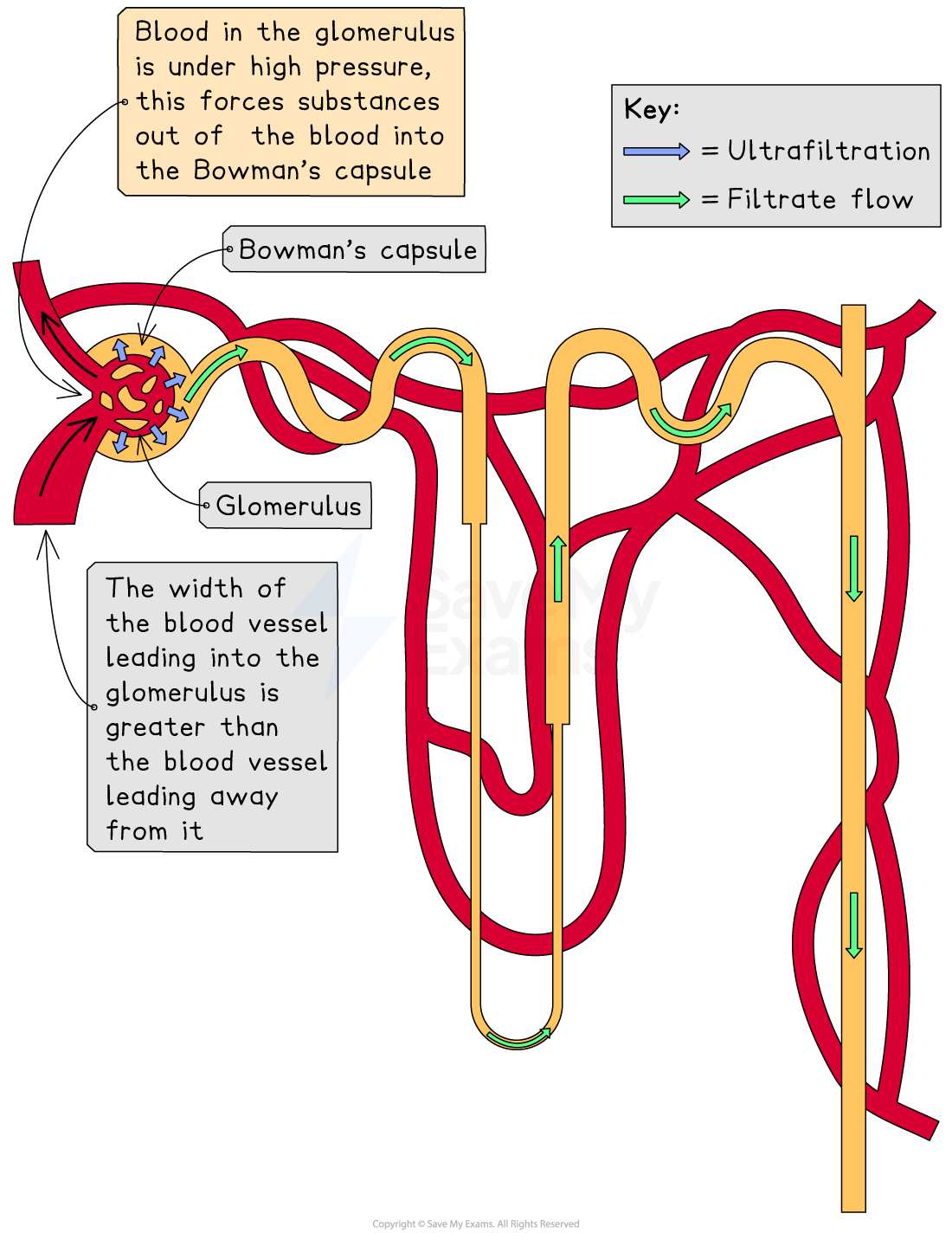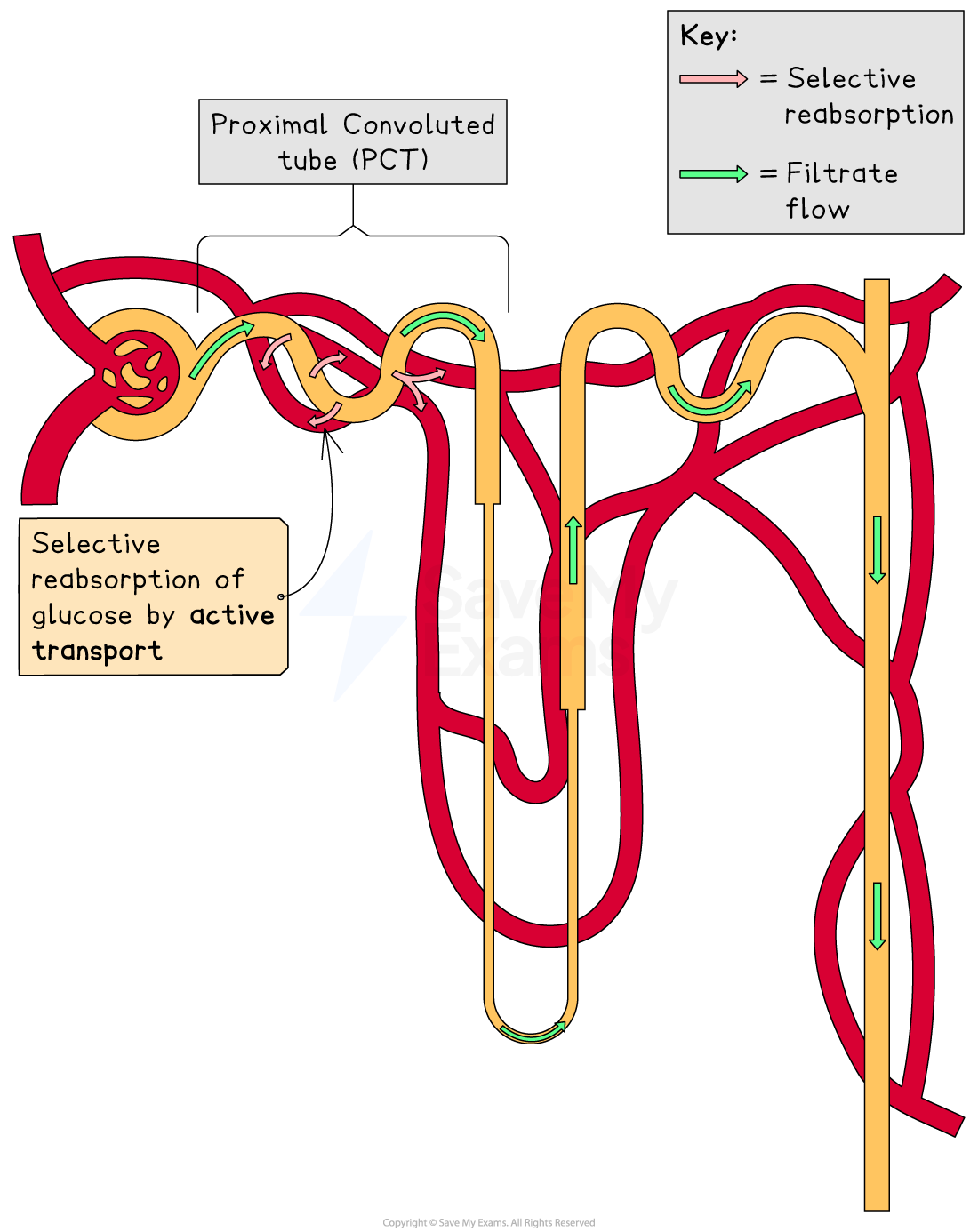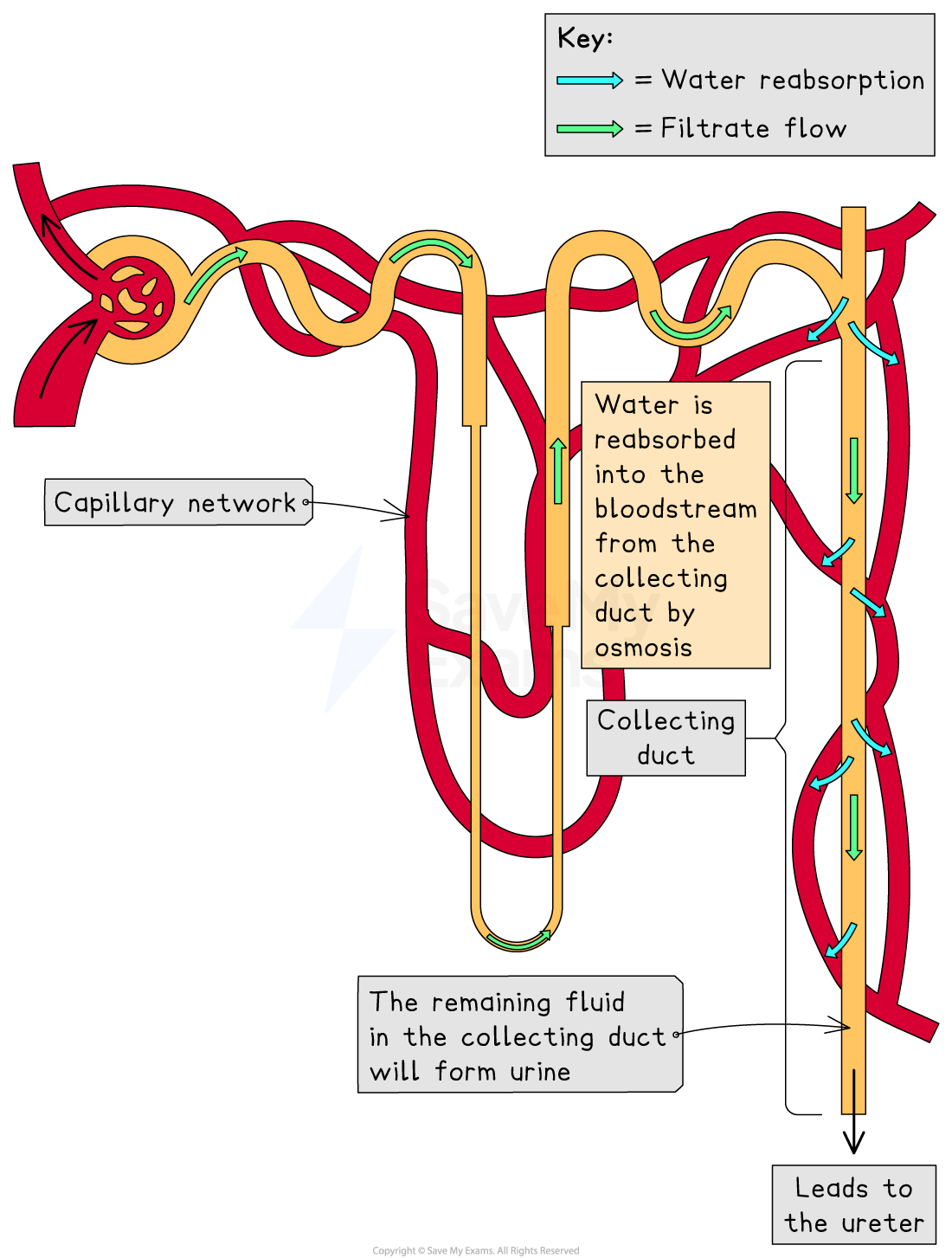Nephron Function (Edexcel IGCSE Biology): Revision Note
Exam code: 4BI1
Formation of urine
The human body is constantly producing metabolic waste (eg. urea)
The kidneys filter the blood to remove waste products, forming urine
However it’s important that useful substances (eg. glucose) or too much water, don’t end up in urine
Three main processes occur in the nephron to form urine:
1. Ultrafiltration
2. Selective reabsorption of glucose
3. Reabsorption of water
Ultrafiltration
Ultrafiltration is the first stage of urine formation
Ultrafiltration occurs in the glomerulus
The walls of the capillaries of the glomerulus and the Bowman’s capsule are separated by a thin membrane that acts like a filter (or sieve)
Small molecules can pass through the membrane but large molecules cannot
Blood in the glomerulus is under high pressure, forcing small molecules such as water, glucose and urea out of the blood into the Bowman’s capsule
The width of the lumen of the blood vessel leading into the glomerulus is greater than the width of the lumen leading away from the glomerulus
This difference in width increases the pressure of the blood in the glomerulus for ultrafiltration, so that small molecules are forced out into the Bowman's capsule
Despite the high pressure, larger molecules in the blood (eg. proteins) and blood cells themselves are too big to pass through the membrane, so they remain in the blood in the capillaries
The fluid that collects in the Bowman’s capsule is called the glomerular filtrate
Substances present in the glomerular filtrate are:
Water
Glucose
Urea
Ions (salts)

Selective Reabsorption
After ultrafiltration, the glomerular filtrate passes through the proximal convoluted tube (PCT)
The body does not want to excrete (lose) any glucose, so all of the glucose present in the glomerular filtrate is selectively reabsorbed in the PCT
This process is called selective reabsorption because glucose, a useful substance, is reabsorbed back into the bloodstream while waste products like urea remain in the filtrate
Remember glucose is required for respiration, as well as maintaining a blood glucose concentration
Glucose is reabsorbed from the filtrate in the PCT into the capillaries by active transport, which moves glucose against its concentration gradient.
The cells of the PCT contain many mitochondria to provide the energy (ATP) needed for active transport of glucose

Examiner Tips and Tricks
Take care to describe clearly where substances are moving from and to in the kidneys e.g. glucose moves from the filtrate into the bloodstream when it is selectively reabsorbed.
Small substances such as urea are forced out of the blood during ultrafiltration, they don’t diffuse out of the blood.
Reabsorption of Water
The final step for urine formation is reabsorption of water, which is part of the process of osmoregulation — maintaining a water levels in the body
After selective reabsorption of glucose in the PCT, the filtrate passes through the rest of the nephron: the loop of Henle, distal convoluted tubule (DCT), and collecting duct
Some water reabsorption from the filtrate occurs in the loop of Henle, but the majority of water reabsorption occurs from the collecting duct
Water is absorbed into the blood from the collecting duct by osmosis. The amount of water absorbed from the filtrate is dependent on the concentration of the hormone ADH (antidiuretic hormone), which is released by the pituitary gland in the brain:
More ADH → more water reabsorbed, producing concentrated urine
Less ADH → less water reabsorbed, producing dilute urine

Table summarising ultrafiltration, selective reabsorption & water absorption
Process | Where it happens | What happens | Substances involved |
Ultrafiltration | Glomerulus | High pressure forces small molecules out of the blood in the glomerulus into the Bowman’s capsule |
|
Selective reabsorption | Proximal convoluted tubule (PCT) | Glucose is reabsorbed from the filtrate into the blood by active transport | Glucose |
Water absorption | Collecting duct | Water is reabsorbed by osmosis from the collecting duct into the bloodstream (controlled by levels of ADH) | Water |
Examiner Tips and Tricks
Don’t be surprised if in your exam you’re presented with a table that gives you details about the relative concentrations of substances in filtrate at different parts of the nephron or about substances present in the urine.
In a healthy individual, there should be no glucose present in the filtrate after the PCT, and no protein present in the filtrate/urine at all (the only place protein should be found is in the blood in the glomerulus). The concentration of urea should be greatest in the filtrate in the collecting duct.
If glucose is present in the nephron beyond the PCT or in the urine, then it could be because blood glucose levels higher than normal (eg. the person is diabetic). If someone has high blood pressure, this could cause damage to the glomerulus and protein molecules may be squeezed/forced out of the glomerulus into the Bowman’s capsule. The protein cannot be reabsorbed back into the bloodstream from the nephron, so it will end up in the urine.

Unlock more, it's free!
Did this page help you?